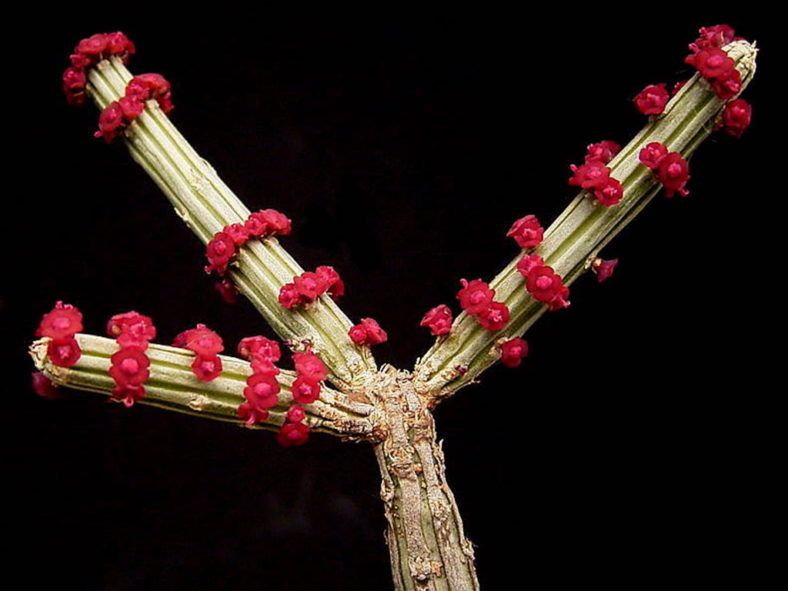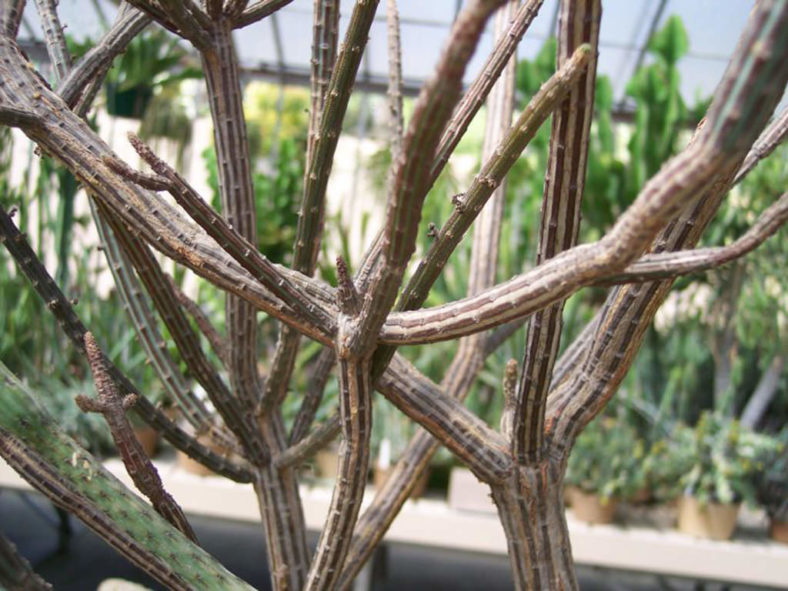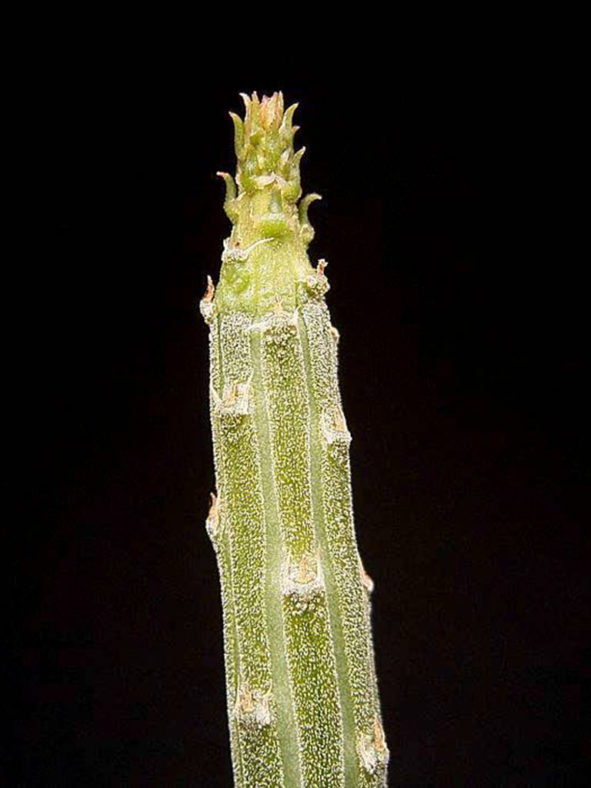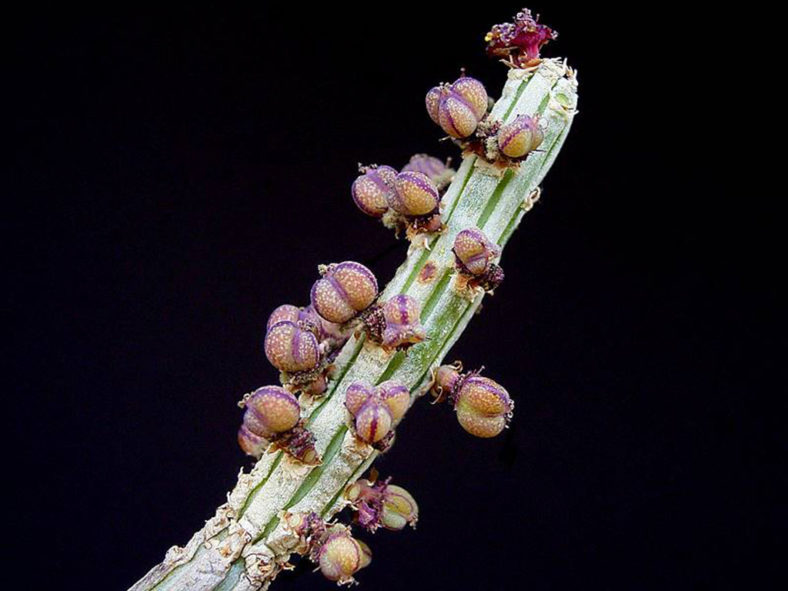Scientific Name
Euphorbia cryptospinosa P.R.O.Bally
Scientific Classification
Family: Euphorbiaceae
Subfamily: Euphorbioideae
Tribe: Euphorbieae
Subtribe: Euphorbiinae
Genus: Euphorbia
Etymology
The specific epithet "cryptospinosa (krip-toh-spin-OH-suh)" means "with hidden spines" and refers to the cryptic spines of the species.
Origin
Euphorbia cryptospinosa is native to Ethiopia, Somalia, and Kenya. It grows in sandy and gravelly soils under and within other shrubs at elevations between 490 to 4430 feet (150 and 1350 m).
Description
Euphorbia cryptospinosa is a sparsely branched, erect or subscandent succulent shrub with a small tuberous root and narrow branches arising in whorls. It can grow up to 10 feet (3 m) tall. The branches are fleshy and cylindrical, with 5 to 10 longitudinal ribs, and can reach up to 0.4 inches (1 cm) in diameter. The spine shields are joined, forming horny, reddish-grey strips along the ribs, almost completely covering the branches, separated only by green, very narrow grooves. The spines are very fine and soft, occur in pairs, and are evident only in young growth. The leaves are linear, soon deciduous, and can grow about 0.1 inches (0.25 cm) long.
Cyathia are bright crimson and can reach a diameter of 0.15 inches (0.4 cm). The fruits are 3-lobed capsules.
Euphorbia cryptospinosa is remarkably similar to Peniocereus striatus, a cactus endemic to the Sonoran Desert.

How to Grow and Care for Euphorbia cryptospinosa
Light: This succulent is a sun lover. Place your indoor E. cryptospinosa in a sunny window. You may place the pot on the balcony or in the garden from spring to fall. Increase sun exposure gradually to prevent sunburn.
Soil: E. cryptospinosa requires well-drained soil. Use a commercial mixture formulated for succulents, or make your own potting mix.
Hardiness: High summer temperatures are not a problem, but low winter temperatures can damage or kill your plant. E. cryptospinosa can withstand temperatures as low as 30 to 50 °F (-1.1 to 10 °C), USDA hardiness zones 10a to 11b.
Watering: From spring to fall, water when the top inch (2.5 cm) of soil feels dry. Reduce watering in winter. Give it just enough water to prevent wilting. The best time of the day to water your E. cryptospinosa in the warm season is the evening.
Fertilizing: Plants in a pot need regular feeding. Apply a balanced fertilizer in a 10-10-10 NPK formulation, diluted to 1/4 strength weekly during the growing season.
Repotting: E. cryptospinosa will benefit from repotting, but it does not need to be repotted yearly. When your plant is outgrowing its pot, it is time to repot it in a larger pot and give it a fresh potting mix. The repotting is best done in early spring, at the beginning of the growing season. Wear gloves, protective clothing, and appropriate eye protection when repotting this succulent.
Propagation: The easiest and fastest method of propagation for this plant is by using cuttings. It can also be grown from seeds but can be difficult to germinate. The best time to take cuttings is in spring or summer. Sow the seeds in spring.
Learn more at How to Grow and Care for Euphorbia.
Toxicity of Euphorbia cryptospinosa
E. cryptospinosa produces a white milky sap that is toxic and can cause irritation to the skin and eyes. Therefore, keeping your plant away from children and pets is best.
Links
- Back to genus Euphorbia
- Succupedia: Browse succulents by Scientific Name, Common Name, Genus, Family, USDA Hardiness Zone, Origin, or cacti by Genus
Photo Gallery
Click on a photo to see a larger version.


